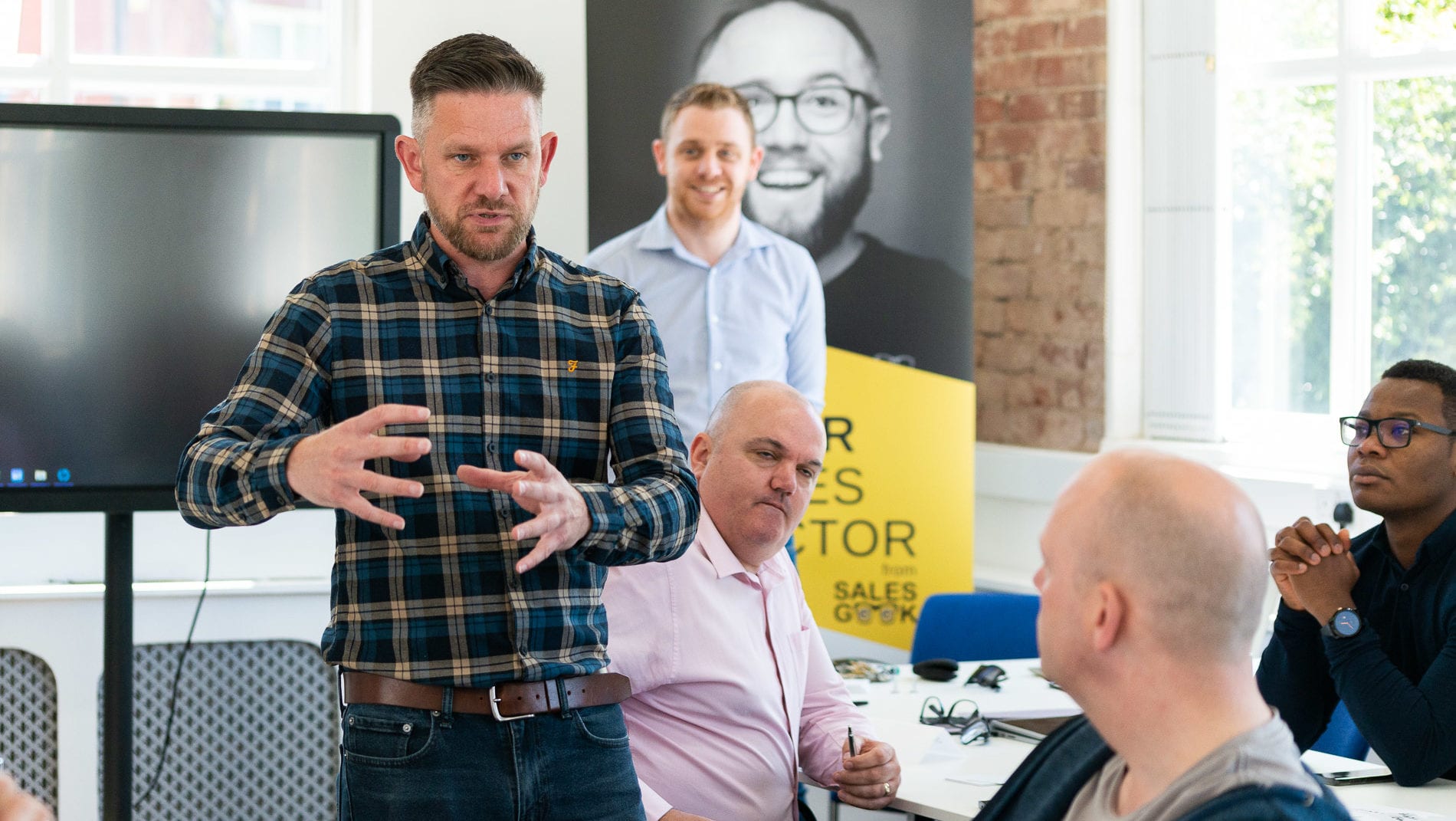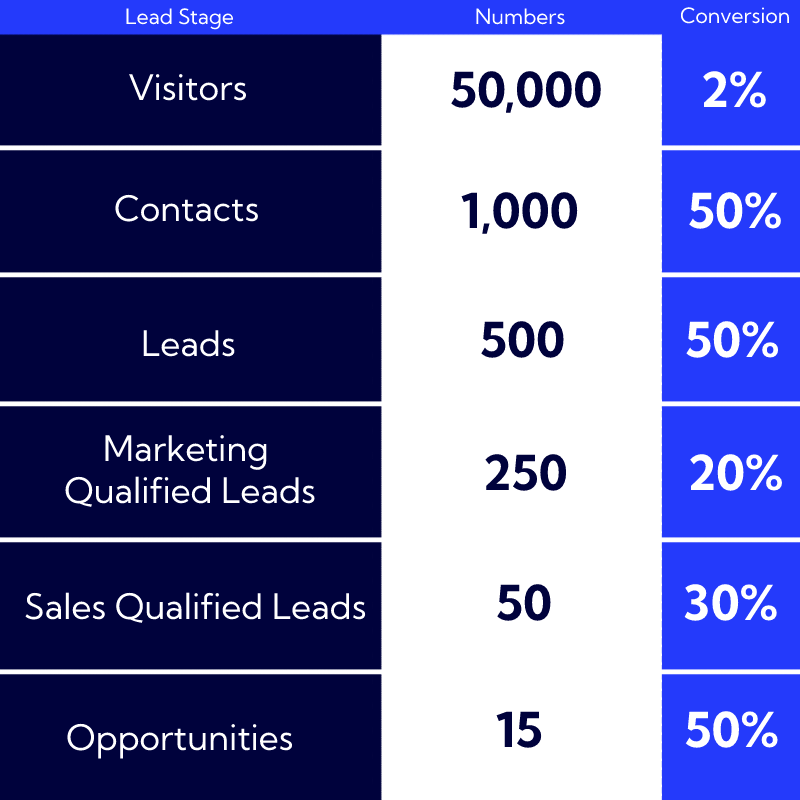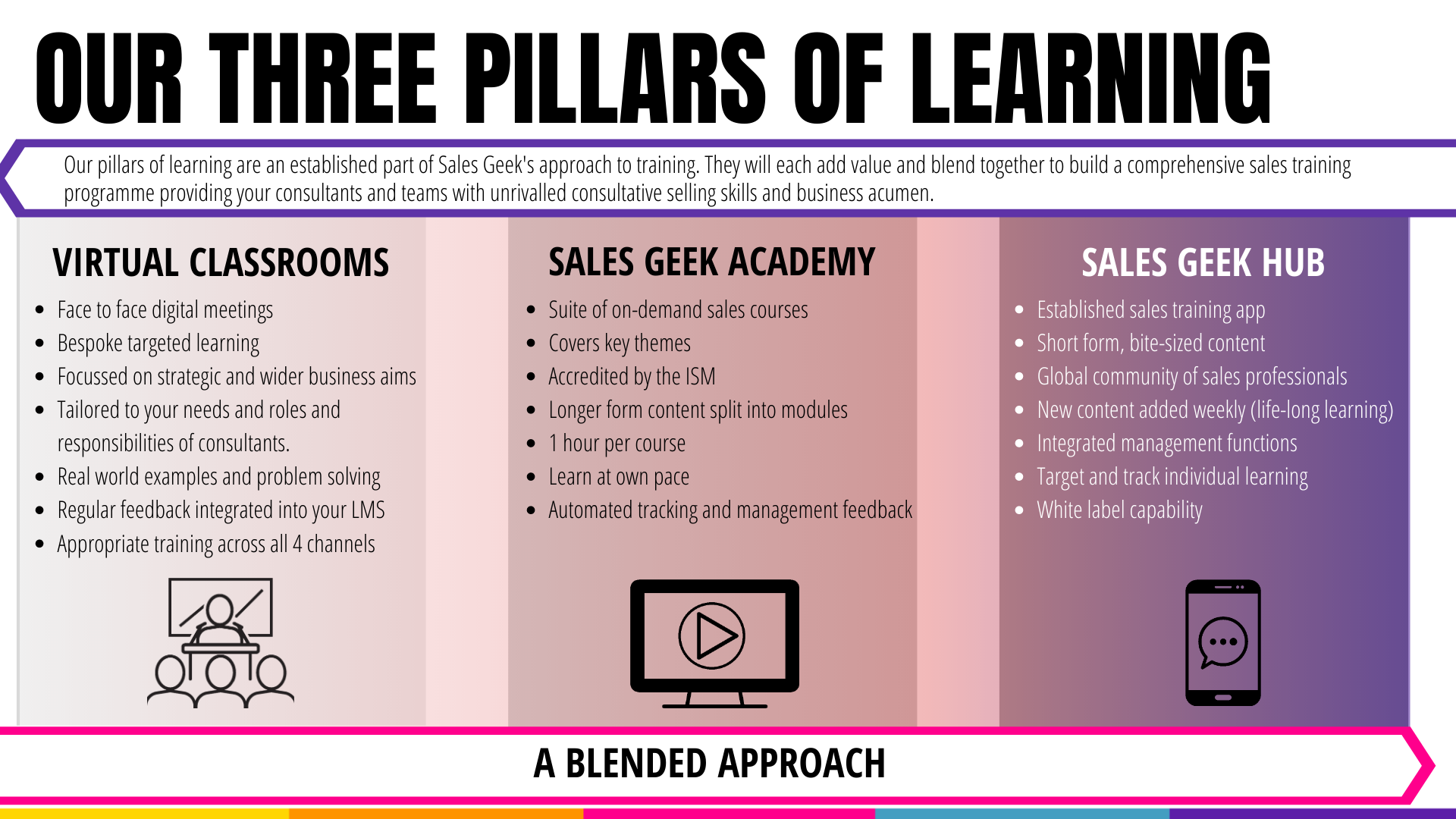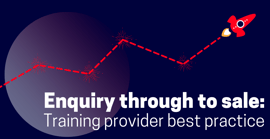The 7 things that allow this training company to scale fast

The 7 things that allow this training company to scale fast
Sales Geek are a sales training organisation based in Lancashire, UK. They have gone from strength to strength since their inception in 2017, doubling their turnover year-on-year. They are on a mission to chance the way the world perceives sales, and have been innovative and resourceful throughout their journey to achieve this growth.
We had the opportunity to welcome Jonathan Finch, Co-Founder of Sales Geek, and James Denny, Chief Strategy Geek, along to speak at Everest Virtual Conference 2021. In this talk, Sales Geek walk us through the 7 ways they have been able to scale fast and differentiate themselves from the competition. Below, we sum up the key themes and ideas from the session. Please note: Paraphrasing has been used to aid the flow of content.
Watch the webinar:
Use the headings below to easily navigate down the page:
1. Get the right people on your bus
2. Analyse a way to maximise profit
3. We make a lot of noise!!
4. We focus as much on retention of clients as we do on fresh business
5. Fail. Fast fast, and fight back
6. Find a way to constantly fill your funnel
7. We changed our business model completely based on what the market wanted
%20(1).png?width=89&name=New%20Project%20(3)%20(1).png) Jonathan Finch, Co-Founder of Sales Geek
Jonathan Finch, Co-Founder of Sales Geek
%20(1).png?width=87&name=New%20Project%20(4)%20(1).png) James Denny, Chief Strategy Geek
James Denny, Chief Strategy Geek
So, without further ado, let's see what Jonathan and James had to say.
1. Get the right people on your bus
Hire correctly, fire fast
One of the things we really focus on at Sales Geek is our people, and our culture. Making sure we are surrounding ourselves with the right people to start with. Everything in business starts with your people. If you don't get this right, and you have the wrong people making decisions, it impacts everyone else.
Now, we've made some mistakes on this.
We've made the wrong hiring decisions, and wrong partners as we've gone along. We've lost people along our journey. Sometimes the output, the delivery, or the fit just isn't there, and it's been a mutual parting. Don't take people on a long journey to find out whether they're going to fail - you should know within one or two months whether this is going to work out for you or not.
You might have the greatest training programme or eLearning suite, however unless you've got great people behind that, you are really going to struggle. It also needs a mix of complementary capabilities across your team. While all of us at Sales Geek have a groundwork and a groundswell of sales in our DNA, I have a specialism in mergers, acquisition, exiting, etc, whereas Jonathan has skills way beyond mine in terms of sales training. We all compliment one another, and that's really important.
Swim lanes
Give your team the freedom and framework by which to create their world, and hold them to account on the deliverables and outcomes you want them to achieve for your business. Those deliverables should be ones that hit the needles that drives your growth. So rather than micromanage, you own this, this turns that dial, and that's your outcomes. I don't care how you get there, just get there. That's how we operate. We trust each other.
We have this thing in our business called 'swim lanes'. So, of course, we like to stick in our swim lanes. I do more than most. Jonathan, on the other hand, likes to go all over the place in different swim lanes. It's fine, as long as we're honest with each other and we're accountable with each other about what we're doing, what we're delivering, and what the impact is!

Output focused
If you're working remotely now, with a mobile workforce, it is more important than ever that you are outcome focused rather than input focused. You cannot see what's going on everyday - unless you've got that employee's webcam turned on (which I don't recommend!!). We don't care if people work different hours, or even work Saturdays and have Mondays off, as long as they reach their outcomes at the end of the month.
Of course, if they don't achieve desired outcomes, we help them, we coach them, but ultimately, the point here is it's all about freedom.
2. Analyse a way to maximise profit
This is a really key one. I don't think most organisations spend enough time analysing how they make profit. I know this seems like a very simple thing, but if you want to scale very quickly you have to have a good source of profit. If the profit it coming in, you can reinvest that back in and grow again, year on year on year.
Most of the organisations we work with as part-time Sales Directors, or in training, don't spend enough time actually analysing which parts of their business make profit. This links to a concept that we talk about frequently at Sales Geek, called bottlenecks.
Find your bottlenecks
.jpg?width=2000&name=New%20Project%20(58).jpg)
A bottleneck is best described as the narrowest part of a businesses process that results in generating profit. By identifying and addressing the bottleneck, this can, in turn, have the biggest impact in generating profit. In our Leadership team meetings, we are always looking at where that bottleneck sits. What is the thing that is slowing down the engine, that will help us get in front of more clients? If you can't analyse this, and you don't have a way of looking at it, it is going to make it very difficult for you moving forward to grow.
Watch the webinar at the top of this page for a couple of real-world examples of bottlenecks!
Profit
Once we've identified and rectified bottlenecks, it's then time to talk about profit. What do you do with profit?
There's two key business terms that we think you need to be aware of and think about with regards to profit.
Runway - This is the first thing you need to build up with your profit. This is essentially a bucket of surplus cash flow (such as a 13-week cash plan) which acts as a cushion if something happens to the business, such as another COVID outbreak. It allows you to go X amount of months, with no revenue coming through the door, and you are still a viable operating business.
Dividend bank - (If your business operates with dividends) - A pot of money that you will then store over and above your runway, that you will all agree as Directors to say "that's what we'll take as a dividend on a quarterly basis". Then, anything beyond that pure profit that you've worked out, is investment. All of that goes back in the business. You spend it on your people, and you spend it to your forecast.
To invest, and to grow a business, you have to put that money in. You've got to recruit, you've got to get the right technology, you've got to build products - you need to invest. In our first year, we struggled with accurate forecasting, and this made for low confidence with investment. As you get better at forecasting, it gives you a lot more confidence to invest in new initiatives for the business.
Don't keep the cash in the bank - it serves you no purpose whatsoever! Spend it.
3. We make a lot of noise!!
We make a heck of a lot of noise. We are a noisy business. We're very active on LinkedIn and other social channels.
Our content strategy is slightly different from a lot of other businesses. We see time and time again, business say to us "oh we do loads on social media." So we go on to their channels and all they put out is "these are our products, these are our services, these are our prices, this is what we do, this is a case study of what we did for another organisation." These are all great things to put out there - you want people to know what your products and pricing is etc, but you have to mix that marketing message with content marketing.
Content marketing is something that is valuable to your target audience. Not to you, your target audience. One of the very first things we did at Sales Geek which really helped us at the start was that we were constantly posting videos on LinkedIn. It wasn't videos of me and James having lunch and having a chat, we would sit in front of the camera and give sales tips to people. It might only be something short, perhaps something around closing, or around negotiating, or fact-finding questions. We're talking one or two-minute videos. People don't have a lot of time - they want to digest this stuff and go and use it. Now, that really helped us.
We weren't selling our services there, at least not actively saying "do you want to buy this?". We were making people aware of our expertise. Now if somebody digests one of those sales tips, uses it on a call and it works, they remember you. We are memorable to them.
At some point in the next six, twelve or eighteen months, in their boardroom there will probably be a conversation about sales. If we are memorable to those people, they will come back to us.
A key metric you can use for this, for anyone who is looking to improve their social media posting, is four pieces of content to one piece of sales.
At the start, a lot of people said to us - "you give a lot away". We do give a lot away, but people still want to come back to us and create bespoke training for them. We've got a lot more content than just the stuff we give out on LinkedIn.
Here are 4 initiatives we give away for free:
Workshop Wednesdays: Every Wednesday morning from 8:30am till 10am, we run a sales training session completely free of charge for any one that wants to get involved. One of the trainers hosts it, and it's just great to get people in and network.
Strategy Thursdays: These are sessions for your sales directors and managing directors - completely free of charge to attend and goes out on all popular social channels.
The Huddle: As soon as COVID hit, we knew we were going to be sat at home, so we launched the huddle. Every single morning, from 8:30 to 9am we did a huddle online. We got up to 200 people on one of those.
Sales Geek Live: We're often streaming live on Facebook and LinkedIn, talking about opportunities and challenges for sales professionals
Ultimately, it's noise - we're creating noise.
Never underestimate the power of putting your brand and awareness out there. One of the greatest books you can ever read is Dr. Robert Cialdini's Six Principles of Persuasion. In this, there's a huge focus on reciprocity - give to get. All the thing we do above are free of charge. It's thousands of pounds worth of content that we give. It creates fandom, and contributes to that future revenue pot.
4. We focus as much on retention of clients as we do on fresh business
The golden questions
Most training providers out there sell programmes. They go out there, deliver a 6 week, or 12 week programme - which might be an open course. We thank the person for coming, we go back to the office and we do the whole process again. Going back through the funnel, and back through the whole pipeline again.
We focus as much, if not more, on retention and retainers, as we do just trying to get fresh business in. A client that you've already got is already a fan, (hopefully!) Especially if you're already providing a good product and a good service.
Turning a one-grand client in to a two grand client is dead easy. Ask them a couple of questions - Is there anything else I can help you with? Have you got a referral for me?
If you focus on your retainers as much as you do your new business, and I promise it's going to get a lot easier for you.
One of the hardest things to say to a client is "Can I have some more business?" You feel a bit awkward, asking for more. We have a model where we bake it in to the front of our process and journey. At month four of our program, if you're loving it and we're delivering, and we're hitting the KPI's that you want us to hit, on month four, I'm asking you for two referrals.
What you've done there, is you've set the scene with the client. In four months, I'm going to ask you. So the pressure is off now. It's all quite jovial and jokey, but invariably the client has at least one referral. "Oh yeah, I knew you were going to ask." It makes our world so much easier.
The power of retainers
A retainer is an agreement or contract where an organisation you work with pays in advance for work, to be secured or specified later, when required. Finance teams love this. Instead of invoicing random amounts every few weeks, a retainer would state that X number of delegates will be trained over a period of time, and it will be a fixed cost per month. Or a set amount of learning hours will be delivered for the organisation over a year.
This allows for accurate forecasting and evens our training costs throughout the year. If you aren't offering retainers to your clients at the moment, you are honestly missing out on such a simple thing. There's nothing better than waking up on the 1st of the month and knowing that your retainers are there to cover your office costs, your salaries and anything else you're doing on top of that.
5. Fail. Fast fast, and fight back
I can't tell you how many times we have failed in the last four years. We've done a lot of things wrong, and due to this learnt to take failure rather well as an organisation. Here are some of the biggest things that we got wrong first time round.
Webinars
One webinar that's well remembered for the wrong reasons is where we amassed 500 registrations, but somebody had forgotten to upgrade the Zoom account to let 500 people on, so only 100 people could join. It was one of the first webinars we had run, and it was only as I was presenting did I notice the attendee count was stuck at 100. There was little I could do at this point. We got some nasty emails through following this!
Funnily enough, we ran a webinar the week after and everything went as planned! It was all water under the bridge. Don't be afraid to fail.
Hub launch
When first launched our sales training app, in it's original development, it was our idea, our concept and our thoughts. It was all about what we wanted to do. We asked a few clients for their input, but we didn't get the best feedback that we could have done. So, we didn't launch an amazing product to start with, and the plan wasn't all that great either.
We reverse engineered all of that really quickly. We recognised and caught very quick what was going on, dragged it back a bit and got the right people involved, fixed the problems, got more customer feedback, then went again. Now, it's one of the fastest growing apps in the app store!
Open courses
For the first 6 months, we didn't run any open courses, it was all inhouse, bespoke training. At some point, we decided, let's run an open course every single week. We thought, if we charged £99 per seat for the open course, had 10 people attending per week, that's going to be a decent bit of revenue. So we launched all of these open courses, but we decided, instead of selling places on the open courses, we were going to sell tokens. So you bought 5 or 10 tokens for the year, and you could use them on any open course.
Now for anyone sat there thinking "that's ludicrous, you idiots, why are you doing that"? Yes, it was a very stupid thing to do. We didn't have, in any way, shape or form, the marketing capacity to fill all of those courses and hit the numbers we wanted to. We ended up cancelling far more courses and having to ring people and trying to get them to not only switch sessions, but switch the actual course they were hoping to go on!
The amount of issues this caused us and the time spent correcting these issues far outweighed the revenue that we did on that. Do you know what we did? We cancelled the whole lot for the year, scaled it back, and started by doing one a month instead. A much more sensible idea!
Split testing
Split testing, or A/B testing, is a term often associated with Sales and Marketing initiatives, and is a method of testing multiple versions of a 'thing' - be that page, an email, an initiative or something else, and assessing which is the most effective. We're always split testing and changing things up here at Sales Geek, and learning what works and what doesn't.
Don't be afraid to fail - you're going to. That doesn't mean your business fails, but aspects of things you try will invariably not work. The key thing is to analyse what happened, why it happened, and learn from it. If it still fits your business model, find a way to progress.
6. Find a way to constantly fill your funnel
The sales funnel
We talk about the 'sales funnel' quite a lot. It's something that is very well known to us. You always have to be putting leads in the top of that funnel, and getting revenue out the bottom. You're not going to win everything, your funnels normally got a few holes in it - more of a sales colander than a funnel.

A multi-channel approach
Most organisations find one way that works, and put everything in to that one area. If you're sat there at the moment thinking "that's us!" Unless you diversify the different ways that you're going to put in there, anything can change. The way tech progresses, the way people use social media, the tools we use in communication - this stuff changes all the time.
I worked at an organisation five years ago, and our only route to market was email marketing. We had no other strings to our bow. Suddenly, spam filters started getting better and blockers on emails started getting better, and we realised we were getting 50% less of the open rates than what we were getting before. This meant 50% less leads, 50% less opportunities, 50% less revenue and ultimately 50% less profit!
Three key tools we use at Sales Geek which have helped us to consistently fill our funnel include:
Linkedin - Sales Geeks each have a massive presence on LinkedIn. It's like the digital version of the Yellow Pages where you can see what everyone is up to in real time!
Whatsapp - This seems a strange one, but getting your key contacts on Whatsapp is critical for relationship building, nurturing and getting a fast response!
Networking - It's hard to find a business event in the North-West that isn't being attended by one of our Sales Geeks. We are everywhere and like to be present at any opportunity to network. It's all about making noise and increasing brand awareness.
Sell to, sell through, sell with
Every business should apply the golden rules of selling in your business:
Sell to: What I do directly with my clients
Sell through: Selling through affiliates
Sell with: Using partnerships
Every business in the world, bar none, should have those three as a basic mantra in to your business. We develop those over time.
Another thing we've been able to do is look at that sales funnel and understand the conversion ratios that got us to that revenue point. If we wanted to double revenue for the next year, we're conscious that we need to push and pull different levers and conversion rates to hit the new numbers. We need to reverse engineer this and work out what numbers we need to hit this target revenue.
7. We changed our business model completely based on what the market wanted
This is our best kept secret when it comes to training.
We offer something completely different to any other organisation out there when it comes to sales training.
The three pillars of learning

Lockdown sort of forced us in to doing this, but we were also trying to move to this model beforehand.
90-95% of our training is currently done virtually. We're all familiar with the traditional training model of: client coming to site, spends a day, two days with them, then leaves. Now I'm a great believer that training, especially in sales, is a process, not an event. If you ever try and buy sales training, you'll be familiar with the conversation "what topic do you want?" "One day or two day?"
We've ripped that up.
If you ring the Sales Geek office and ask for a day of sales training, it's a flat no. What we do though, is we do it in bitesize chunks. Now for me as a learner, I can't sit on zoom for a full day learning. There's no chance - I'll be getting a brew, I'll be wandering off, I'll be playing snake, I'll be looking at Whatsapps. I'll be doing everything but sat on there. If you want to engage me you've got me for an hour, or ninety minutes. So all the training that we do is ninety minutes long. It's all through Zoom and we focus on embedding outside of that.
We do a ninety minute training session, we then set homework, we set outcomes, we set things for the team to go and do, and then we meet up with them next week.
Market responsiveness
It's always a good business mantra to ask "what is different in the market?"
You may be familiar with the terms 'cutting edge' and 'bleeding edge'. Cutting edge, is working at the forefront of something, perhaps the newest technology for example, whereas bleeding edge is where you are creating that product or service, one that is new, experimental and generally untested. I would like to think that we push the boundaries from cutting edge in to bleeding edge as to how we do what we do.
We respond to the market. How do people want to learn? How do people want to take and consume services and education? We've adapted our proposition to fit both the current world as it sits today, but also to try and jump ahead 18 months to how the world might start to look, and incorporate services as we develop them.
Now, all of our ethos and mentality is to push that narrative forward, then change it again to push another 18 months forward, so every time our customers are starting to look at us, they're like "wow - no-one else is doing this". Differentiation is king.
Survey the land
One thing we do with all of our customers is to survey the land. Look at your website, look at your service, look at your product. Then go and look at your peers and your competition. If you look the same, and you sound the same, and you say the same, and have similar imagery to everyone else around you, you are them. And they are you. There is no differentiation. Therefore, the only thing that separates you is your price.
One exercise we do with clients, is that we give them a whiteboard, and they've got to write up all of their unique selling points. People always come up with the same: "We have the best customer service in the industry"; "Our people is our differentiator" - every competitor in your market is going to say they've got the best customer service out there, or the best team. Most of the things people come up with aren't unique selling points, in fact most aren't even selling points. If your differentiator is your people, you're in trouble.

%20(10).png?width=270&height=170&name=Content%20marketing%20for%20training%20companies%20(900%20%C3%97%20450px)%20(10).png)
